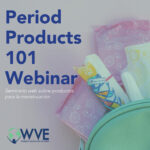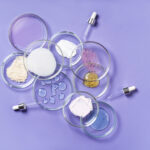Give Reusable Menstrual Products a Chance
 |
| Olivia Romero WVE Fellow |
There have been a growing number of reusable menstrual products* popping up in ads, following me around on the internet. I saw reusable period underwear, washable pads, menstrual cups, etc. I loved the idea of reusable products because it would reduce single-use product waste. I wanted to share these products with my school peers and friends because I thought that this could be the start of raising awareness about how much waste comes from single-use menstrual products.
Upon approaching some of my friends with the idea of buying reusable products, I started wondering why no one at my school talked about reusable products. I sent out a survey to my school to see who would want to use reusable products and if not, why wouldn’t they use those products? As I went through the results, I learned that there were many people who were open to trying reusable products, but there were many concerns about whether products are sanitary and how to use them properly.
Reusable products can range from around $30 to $45 and last around 2-3 years compared to single-use products which can cost an average person around $159+ yearly if they were to pay $13.25 for monthly period products. For example, a great reusable option are menstrual cups. They have different sizes based on a person’s flow, but they all function the same way. They feel like tampons, but you should not be able to feel it after being inserted correctly because the cup creates a seal within the vaginal wall to make sure the blood does not leak or have the cup move. Once used, a person can dump out the waste and rinse with water before patting dry to reuse. It is recommended to boil after a person is done with their period to clean it before using again during their next cycle. The idea of having to boil a product that goes into your body or having to take out an object that is filled with blood seems off-putting or unsanitary to most people who associate periods with being ‘gross’ or ‘disgusting’. These associations and descriptions of periods create a stigma where people may feel more uncomfortable using reusable cups, pads, etc. Society needs to stop associating menstruation with uncleanliness and start thinking about improving the health of those who experience it.
I believe that we need to remove the stigma of reusable products and inform people on how to properly use and take care of them. It is a communal and societal effort to eliminate period stigma and period waste, so reusable products are a great step forward in menstrual equity. The benefits of reusable products are how sustainable it is and how less of an environmental impact it is compared to one-use products. Plus, who wouldn’t want a couple more dollars in their pocket at the end of the year.
For more information on how to use a menstrual cup, see this helpful video.
——–
*We recognize that reusable products are great if you have access to clean water and other resources. Reusable products might not make sense for you but giving them a try and finding what works for you is an important step in taking control of your body and eliminating period stigma.






